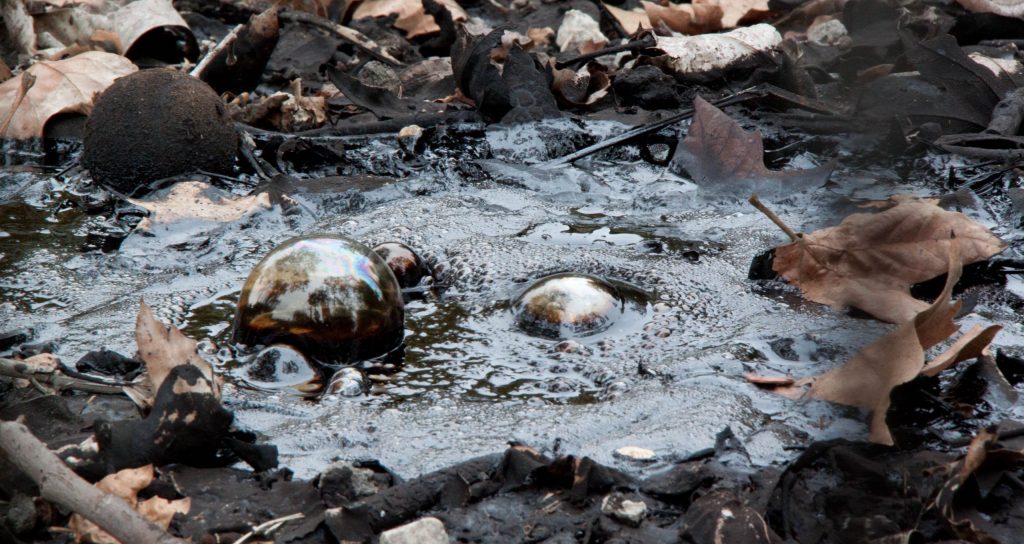

Could astrobiology–the science of alien hunting–offer a key to dealing with environmental problems here on Earth? Publishing in the journal Science last month, an international team of microbiologists studied samples from the world’s largest natural asphalt lake, Tierra de Brea in Trinidad and Tobago. They found even the smallest of water droplets teeming with life. Not only does this tell us more about the likelihood of extraterrestrial life on places like Saturn’s moon Titan, but because the bacteria seem to consume oil, it could help us clean up oil spills.
Asphalt lakes are naturally occurring pools of bitumen–the thick, sticky, black semi-solid form of petroleum–which have leaked to the surface. There aren’t many worldwide, and the Tierra de Brea in Trinidad and Tobago is the largest. A major tourist attraction, it’s long been recognized as scientifically intriguing because of all the fossils trapped in that black goo of the bitumen. But for the last few years, scientists have realized that the lake is also teaming with life–if you look hard enough. This new research shows us just how diverse that life is, and that the organisms are actively eating and processing oil.
As Nature reports, Canadian scientists have found similar organisms in Canada’s oil sands. But the Canadian samples came from wells, which have been injected with water as part of the oil-drilling process, contaminating natural ecosystems. It’s hard to get a sample of uncompromised oil today, which is one of the reasons why the Trinidad and Tobago lake is so exciting to explore.
Astrobiology research scientist and author Dr. Lewis Dartnell feels this new paper is undoubtedly significant. But he also invites us to question which part of it is the most exciting. “The cells are not in the hydrocarbons themselves but in droplets of water, and in the hydrocarbon lakes of Titan at minus 180°C there will be no liquid water whatsoever,” he said. Life on Titan is just too cold and would have to have a fundamentally different chemical structure, dissolved in liquid methane rather than liquid water. “Don’t get me wrong–this is some interesting work,” Dartnell is keen to stress, “but the cool stuff here is about the microscopic niches for life on Earth.”
There are further politics to this research, even without the aliens. Stories about new ways to clean up oil spills serve those who would rather we keep using oil as an energy source (behavior which risks more than spills). Moreover, mopping up spills sounds a lot greener than making it easier to extract hard-to-reach heavy oil, which the research may also help. It’s important to learn about life in new places, on Earth or otherwise. But we should consider why some of this research gets funded when so much else doesn’t and whose ideas of the future that serves. If we, as the general public, want to engage with the expert technical analysis of such advanced microbiology, one way to do so is to ask questions about the politics of its funding and application.


How We Get To Next was a magazine that explored the future of science, technology, and culture from 2014 to 2019. This article is part of our Nature & Climate section, which looks at how human activity is changing the planet–for better or worse. Click the logo to read more.
